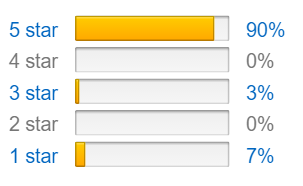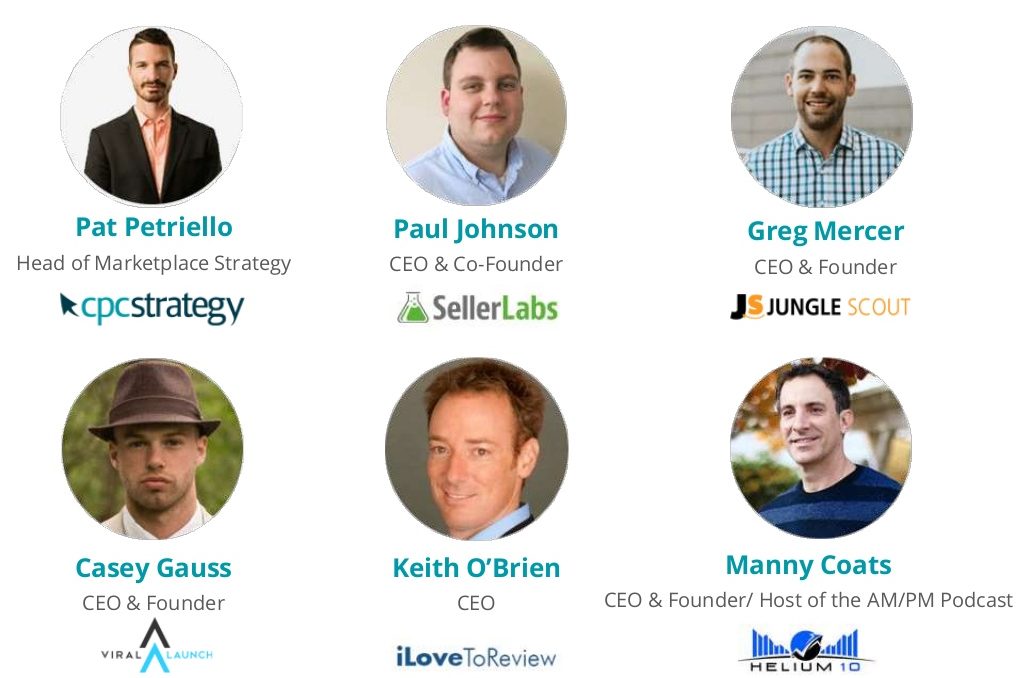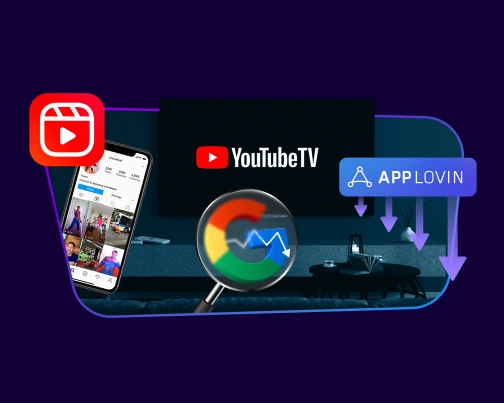The question of how to get product reviews on Amazon has always been one that puzzled merchants. Product reviews (good ones, at least) can do wonder for your Amazon business.

Not only can they lend trust to your brand, instill confidence in your products and help you better your services moving forward, but they also help you show up higher in search and, thanks to all of these things, increase your visibility, click-through rates and sales as well.
But coming by those product reviews?
Unfortunately, that’s harder than most merchants think it should be.

Even if they’re thrilled with your products and can’t wait to share them are still busy people — each with their own jobs, families, and responsibilities to take care of. Why should they use their limited and valuable time just to review your products? They already paid you, after all.
Thus enters the ever-growing problem for Amazon merchants — and all online retailers for that matter.
-
- What’s the best way to get Amazon reviews?
- How do you incentivize your customers to give you their honest, real-life feedback?
Let’s look at a few strategies that can help.
How to Get Reviews on Amazon:
There are a few facets to getting product reviews on Amazon. First, you have to incentivize the customer to take action. Second, you have to show them how to do that. And third, you have to remind them (because let’s face it, we’re all way too busy already).
You also have to do it all while adhering to Amazon’s strict rules about how you can interact with buyers and what you’re allowed to do to solicit feedback.
Here are a few proven (and compliant) methods you might want to try:
1. Adding a reminder insert to your packages
Add a small postcard to your product packaging or shipment box that thanks them for their business, asks for a review, breaks down how to do that and then gives them a good reason to go and take action.
2. Follow up via email or Amazon message
Create drip campaigns that follow up once orders have been fulfilled. Start with one that thanks them for their order and asks if there’s anything you can help with or troubleshoot.
The next one requests a review and breaks down the process. The third one reminds them to go back and write that review if they haven’t already.
You can use Amazon’s automated order feedback system or opt for your own email marketing software for this task.

Here’s what Jeff Coleman, VP, Marketplace Channels at CPC Strategy recommends:
“You definitely should not incentivize the review at all, but the act of following up with a customer via Amazon’s email platform is perfectly fine. You do need to walk a fine line because you don’t want to be spammy.”
“A lot of the email follow up platforms will have automations in place where you can send an email thanking your customer for the order, once they received the item to make sure they got it, two weeks after they received it to make sure they liked it–identify these checkpoints. Don’t email someone every day and say “Leave a review.” Everything should coincide with a checkpoint.”
3. Come back with helpful content
After your customers’ orders have been delivered, send them an email with an extra add-on that can help them get more value from their purchase. Maybe it’s a downloadable PDF set-up guide or a video that demos how to put their order together.
It could also be a recipe booklet (if you sell cooking appliances), an ebook with tips, tricks, and strategies, or anything that gives their purchase more legs.
Make sure to include a note about reviewing you — both your products and you as a seller — if they’re happy with the freebie.
4. Consider a review tool
If you’re short on time or resources, there are a handful of tools out there that can automate your Amazon review efforts and streamline the overall process.
Just make sure they use Amazon-compliant methods to attain reviews (you don’t want your account in jeopardy just for a few reviews!)
5. Leverage your existing outreach channels
It doesn’t hurt to use your social media channels and email lists to remind past customers about reviews either. If they’ve been happily using the product ever since their purchase, they just might need a tiny push to hop online and start writing that review.
In the end, remember that every merchant struggles with how to get product reviews on Amazon at some point — even the big brands. Keep at it, deliver a great experience and give your customers a good reason to write those reviews, and the rest will follow.
Expert Roundtable: How Can Sellers Succeed Without Incentivized Reviews on Amazon?
Pat Petriello, Head of Marketplace Strategy, hosted an emergency press conference on this topic, featuring 5 experts who broke down how Amazon’s new review policy will impact sellers.

Q1. Why are Incentivized Reviews on Amazon Banned?

“It Comes Down To Buyer Trust”
O’Brien: When your customer loses trust with you, all things start to unravel. [At iLoveToReview], we would literally have people come over from other platforms and say, “Well, I’m going to get all four- and five-star reviews, right? And we’d say, “I don’t know, how good is your product?” So that’s a real issue. Because you are not only just losing trust, you’re also…misleading the public if you’re driving four and five-star reviews to a subpar product. So that’s a real issue. Because you are not only just losing trust, you’re also…misleading the public if you’re driving four and five-star reviews to a subpar product.
“This Wasn’t Just a Policy Change”
Johnson: [ReviewMeta] used the word “incentivized review”…and basically, that ReviewMeta story caught on, and all of these other news agencies started picking it up and getting more and more response[s]. So Amazon was having a PR nightmare because ReviewMeta was exposing this thing…that was pretty bad press for them, and I probably would have done the same thing as Amazon.
“Poor Quality Products Shouldn’t Be Able to Hack the Rankings”
Petriello: Success to Amazon is not a silver bullet; it’s not a hack. It’s not something you can do to trick Amazon’s system. At the end of the day, if you don’t have high-quality products as a brand manufacturer or a private labeler, or even as a reseller–you’re not going to have long-term sustainable success on the platform. And that’s probably a good thing. If there’s ways to hack the system so that poor quality or low-quality products can…artificially rank well on Amazon’s search page, that’s not a good experience, and ultimately, it’s bad for Amazon and bad for the Amazon shopper.
“Amazon Was Likely Already Weighting Incentivized Reviews Differently”
Gauss: I was actually kind of surprised, because–with the way that Amazon was factoring in the star rating, I thought they had kind of taken care of reviews from discounted sales playing into ratings…a lot of times is that Amazon is very highly weighting the Verified Purchase Reviews. It’s not like a product that would normally getting a three star is getting four-and-a-half star because of these incentivized reviews…they’re actually getting a pretty accurate star rating for that. But it comes down to the customer perception–they’re not seeing that the star rating is…still valid; or at least pretty close to valid.
Q2. How Can Amazon Sellers Adapt to the New Review Policy?

“Continue to Run Promotions–Just Not in Exchange for Review”
Gauss: The only thing that really changed was Amazon saying that you cannot say it’s given away at a discount in exchange for a review…but even before that, it was always our interpretation that the process that was common around that was always wrong. If you’re giving a product away and you say that you cannot get any more products until you leave a review you’re automatically putting some kind of compensation in place for the customer to leave a review.

“Be Willing to Spend More Time and Money on Product Launches”
Mercer: In the big scheme of things, it’s not that big of a deal. It’s still very easy to have success on Amazon if you have a high-quality product and everything else is good. Sellers are going to have to be a little more creative and put a little more work towards their listings and their email services asking for follow up or reviews…it may take a little more time to launch a product, and you might have to offer it at a little bit of a discount, but overall, I don’t think it’s that big of a deal.

Johnson: You can still get sales without reviews, you just have to spend more money on marketing. So it will be more expensive to launch a product because you’re going to have run Sponsored Product ads, and you’re going to have to get your item featured on a deals website or something like that, or you’re going to have to do your own Facebook campaign…the idea is you’re just trying to drive sales velocity, and you’re still going to get reviews from that.
The overall marketing tool chest has to grow, and sellers are going to have to look at lots of different options to drive sales velocity to their products. And after you get sales…[you] can follow up with good customer service…and if you want to ask for a review, do it in a polite, non-spammy way.Your communication with the buyer should always be about a great customer experience first, and secondly, you can ask for a product review….market unto others as you would be marketed to.
“Focus on Sales History”
Gauss: If [your product] have a great sales history, you can maintain rankings for quite a while, even if it doesn’t have a good velocity for a period of time after the push…Amazon’s not just looking at sales history over the last week, they’re looking at history over the last 30, 60, 90 days…sales history is absolutely key, and continuing to use these marketing tactics [like] promotions, Facebook ads, whatever–sales are key.
“Optimize Your Listings”
Coats: I think that having your listing absolutely optimized in every way today is more important than ever. When I say optimized, I’m talking about everything…in my opinion, the images are the number one thing. Every image has to be perfect–you can’t have one image in there that’s not as good..you [also] have to make sure you’re absolutely optimized for keywords…we’re finding that every keyword and keyword phrase in your title is ultra important.
“Use Amazon Vine (if it Makes Sense For Your Company)”
Coleman: Vine is a good way to get a small number of reviews to start. The unfortunate thing is that third-party sellers don’t have access to that right now. The sooner Amazon opens that up, the sooner it becomes a fair playing field for everybody.
“Focus on Selling Amazing Products”
O’Brien: It’s really about doing the things that you know are right in the first place. The Amazon rush can cause people to make short-term decisions about business. Don’t put something in the marketplace that you think is valuable. Start off and build a product you would be proud to use in your own home–in your own life.
And not just that’s OK–build something really awesome. Build something cool. And start there…let’s just do it right; let’s build strong business practices and invest in learning what really works…I think specifically, also, it’s really time for sellers to look at diversifying, not just outside of Amazon, but certainly across Amazon [global] platforms.
“Understand That Amazon’s a Dynamic Platform”
Petriello: Amazon is not this static entity where you can set and forget a strategy…that ecosystem will continue to change, and a year from now, we’ll be having a different webinar about how Amazon’s policy has changed or a new tool is out, and we’ll all need to adapt to that, and this is really no different.
You Might Be Interested In
















